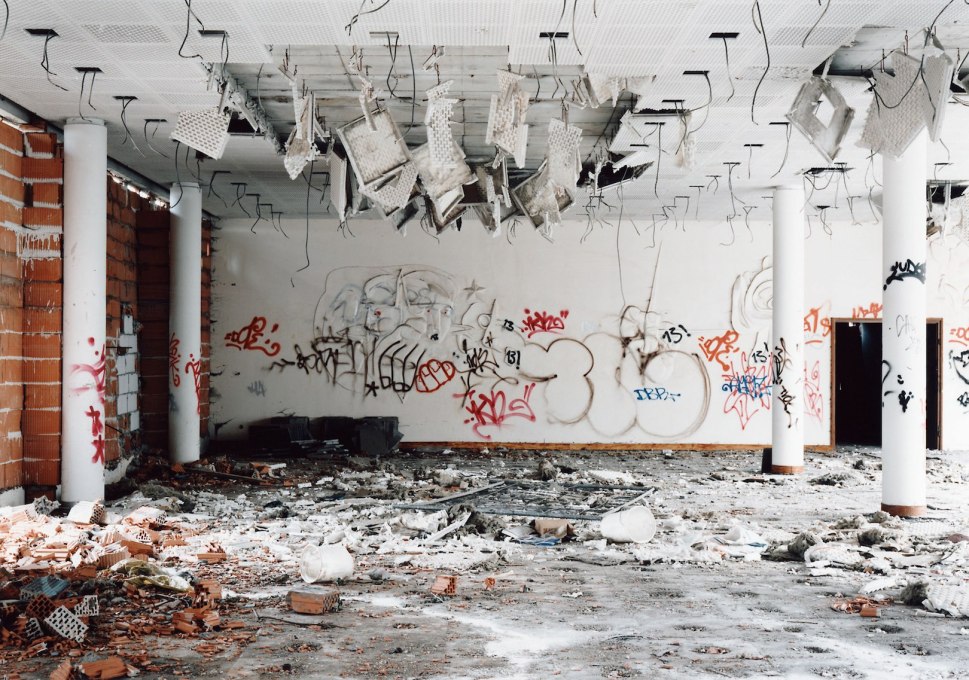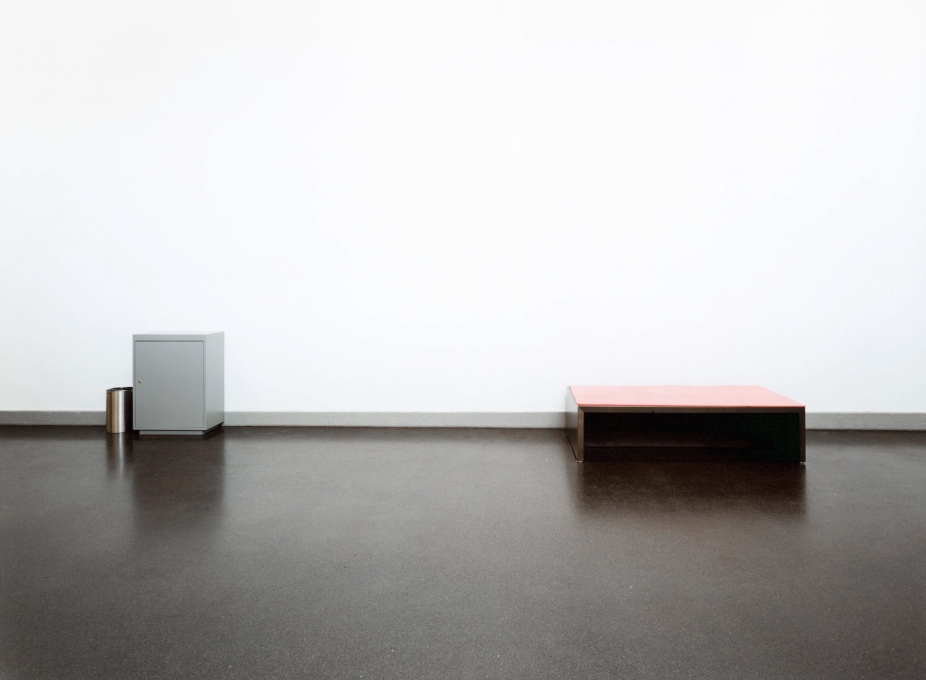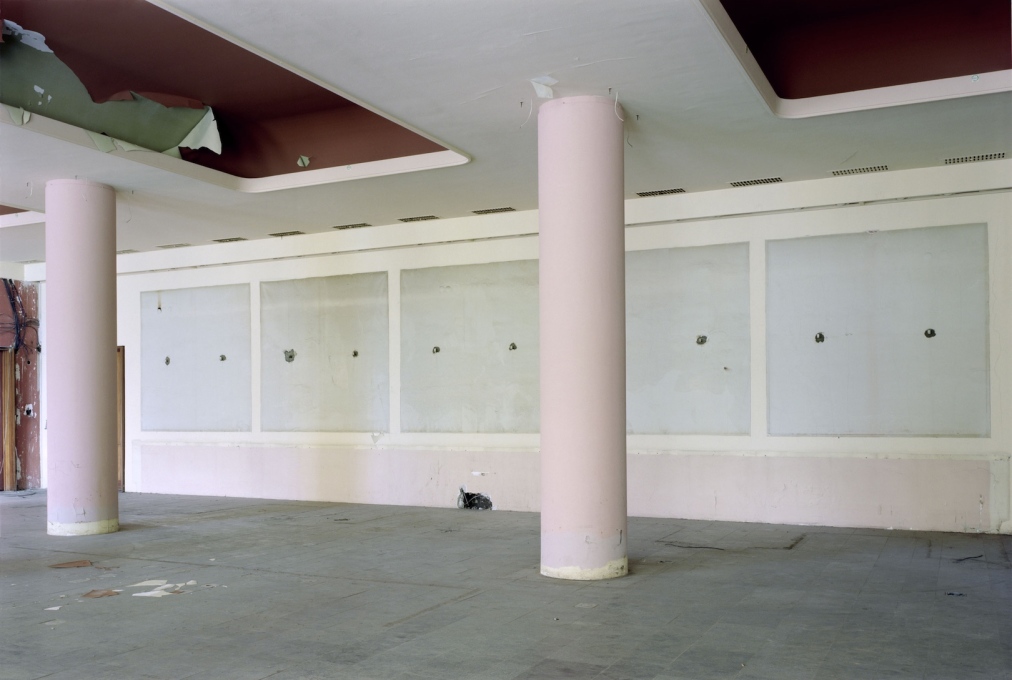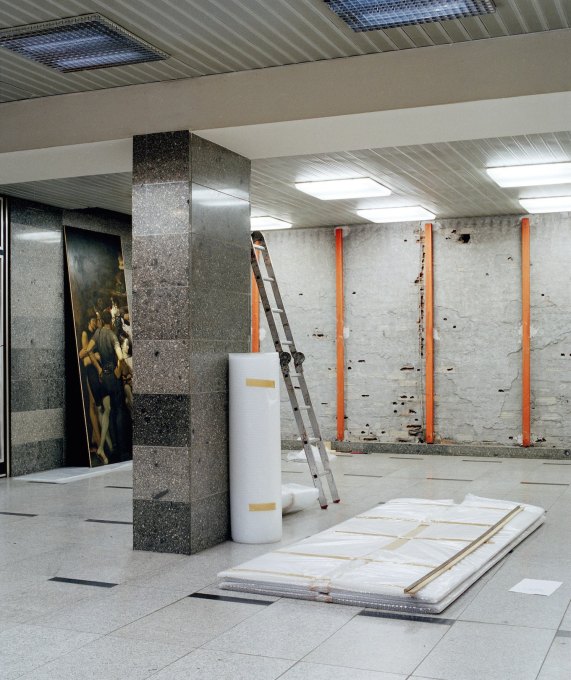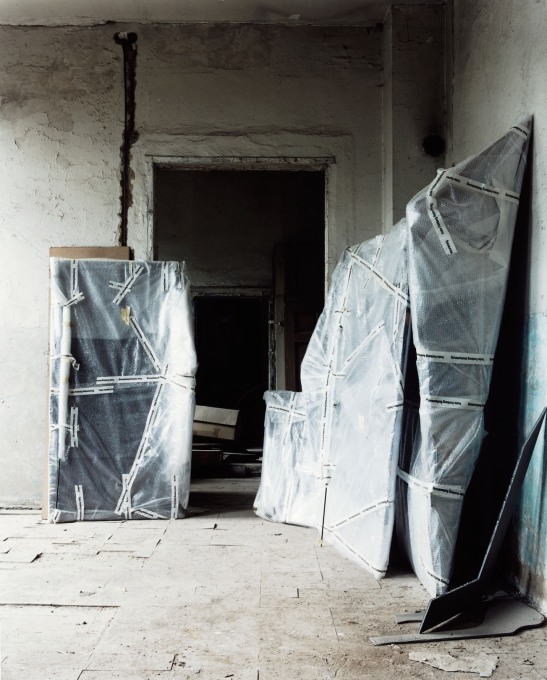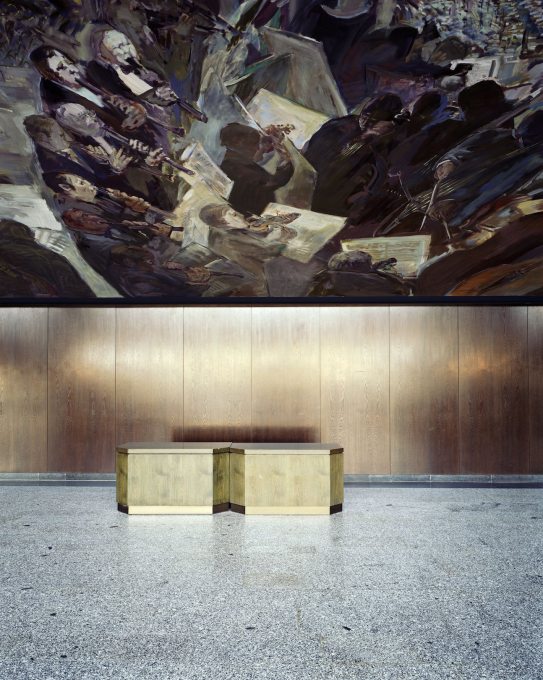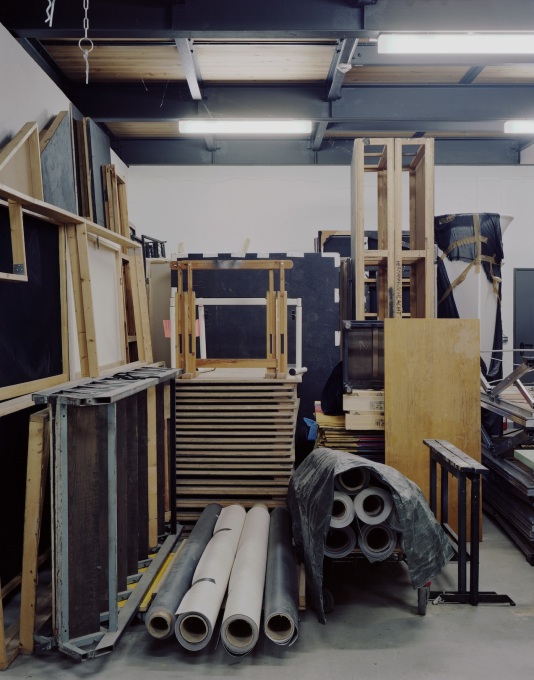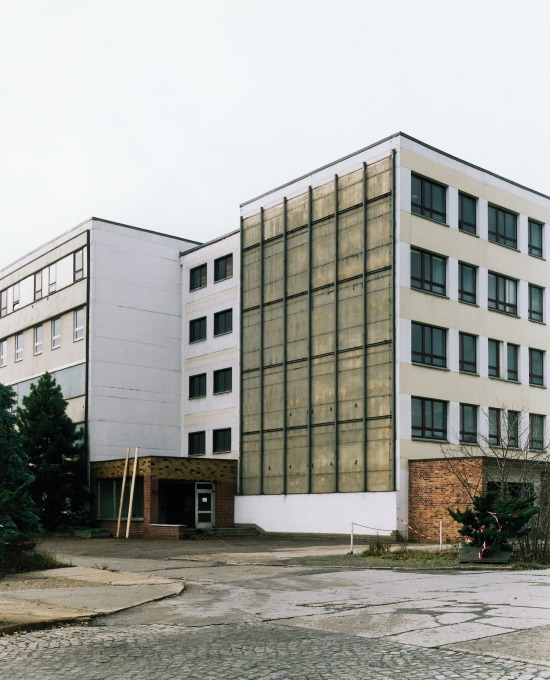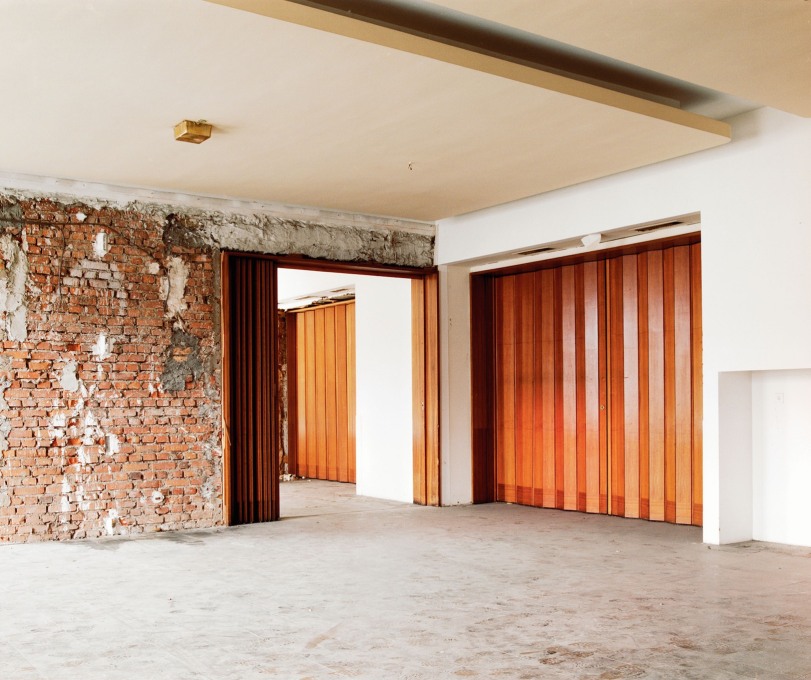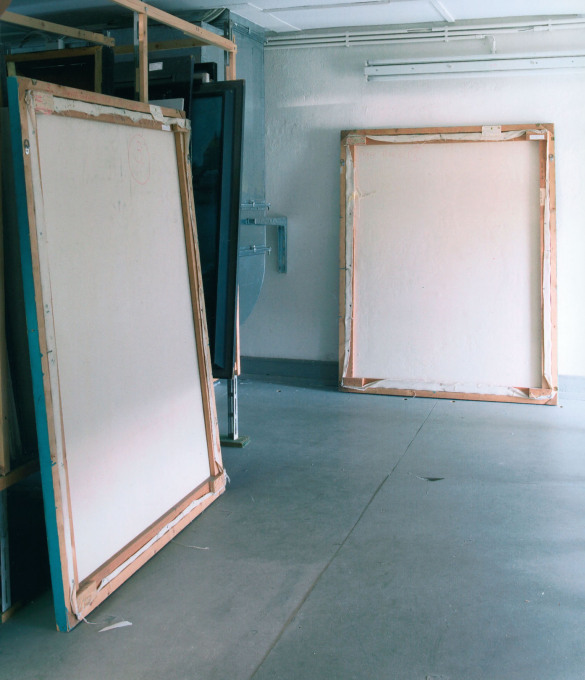Photographer Margret Hoppe, born in former East Germany, has dedicated a large part of her practice to creating her Archive of Abandoned Buildings‚ tracing the ruination of the sometimes proto-utopian buildings of the former Eastern Bloc. But her work is more than just a document of contemporary ruins – in her Vanishing Images (Die verschwundenen Bilder) series she seeks out and records the empty walls and spaces left by GDR artworks, lost, stolen or removed: each photograph resonantly titled with that of the absent work. uncube’s Fiona Shipwright talked to Hoppe about how she came to be so interested in attempting to capture absence.
Can you tell us a little about your background and how you came to be interested in photographing architecture?
As a child I’d always wanted to study art‚ but painting rather than photography. I got my first camera at the age of twelve and started to take photos of my friends and everyday life. My brother had a darkroom in our bathroom where we developed black and white photographs – I loved the magical moment when the image would appear on the paper. I moved to Leipzig to study history of art and philosophy for a year and then entered the Hochschule für Grafik und Buchkunst in the city where I studied until 2009 with Timm Rautert and Christopher Muller. My interest in architecture is also related to my childhood experiences. I grew up in a country house which was around three hundred years old and always in the process of transformation. I observed how its spaces changed over the years; how it was constructed and deconstructed. When I moved to Leipzig I saw the same things happening – how the city was changing after 1989 and how houses would appear and disappear in a short space of time. One can read the history – the political and economical changes – through the architecture.
When and where did you first start shooting former GDR buildings? How do you go about identifying and then entering the sites – does it involve many visits?
I started in my hometown of Greiz‚ photographing old textile factories that had become ruins in the 1990s. Later‚ I took photos in the former Guesthouse of the Ministry of the GDR in Leipzig‚ the ORWO factory in Wolfen and the ZEHA factory in Thuringia. In most cases the buildings were abandoned and I could enter through a hole in the wall or a broken window. In some cases – like the former secret sports training camp in Kienbaum – I had to ask for permission‚ which was not easy because sometimes the owners of sites didn’t want them to be photographed. In most cases‚ I visit a site three or four times‚ arriving at various times of the day to see the spaces in different light conditions.
In your series entitled Vanishing Images (Die verschwundenen Bilder) you photograph the blank spaces where GDR artworks once were, their absence marked by retaining the artworks original titles as the titles of your work. Was this documentation of empty spaces always your intention?
In the beginning I wanted to photograph the public art of the GDR. But when I visited the buildings, I found that the art wasn’t there anymore. So instead I had to photograph its absence: the spaces of paintings and sculptures that had disappeared. It was like catching a ghost – I could not photograph the objects but I still saw some traces of where they had been. By giving my photographs the titles of the original artworks‚ I refer to these absent works‚ leaving the viewer to imagine what once there.
How many of the sites have you documented? Has the project changed how you think of the original artworks themselves – are there any in particular which stand out for you?
I’ve photographed about twenty sites but haven’t published all of them. Sometimes the site is more interesting than the picture of it. Or in other cases there were no traces left to document or the light was not right. I think the artworks themselves have different qualities. I like the paintings from Werner Tübke’s 5 Continents series, that were hanging in the restaurant at the Astoria Hotel in Leipzig. The painting Joy of Living by Gerhard Richter in the Hygiene Museum would be great to see – but it’s covered over with white paint.
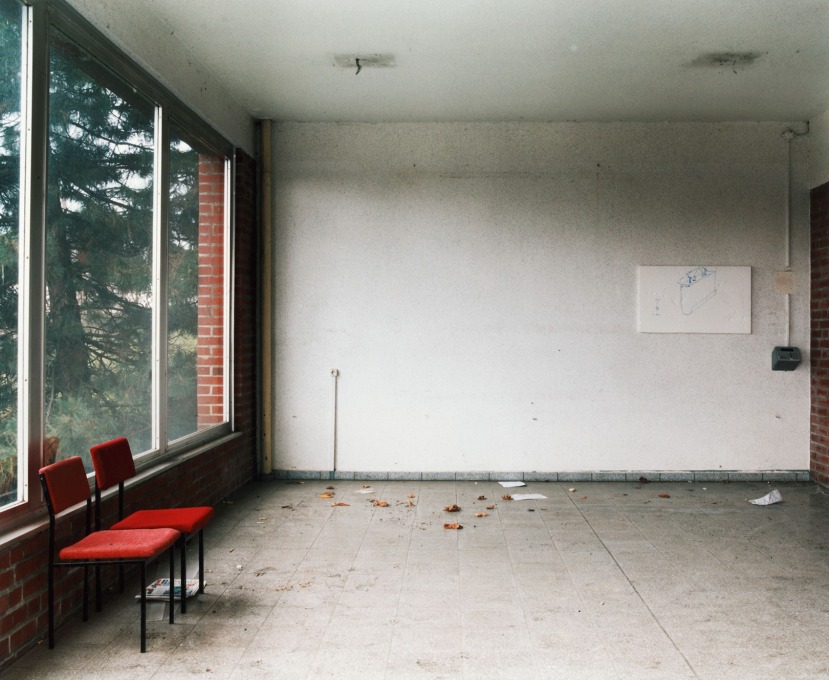
You have also extensively documented the Guesthouse of the Ministry of the GDR in Leipzig, which now lies in a dilapidated state. Could you speak a little about your first visit to the building?
When I entered the building for the first time in 2006‚ it was difficult to find a way through all the grass and trees that had grown up around it. I climbed through a hole in the wall and found myself in a humid, dark and foul-smelling building. All the furniture had either been destroyed or had disappeared‚ all the floor tiles were stolen and people used the house as a playground for taking out their frustration. The building is like a phantom. Once it was one of the most symbolic buildings in Leipzig where foreign dignitaries and politicians stayed; now it has no meaning or function anymore.
In recent years‚ images of abandoned buildings have become very popular: take the vast amount of visual documentation produced by the legion of urban explorers visiting Detroit each year, for example. In some ways this leads to a rather homogenous aesthetic. Are you concerned that this could lead to the flattening of some of the histories involved‚ particularly with one so complex – and recent – as the GDR?
There seems to be a fascination with ruins in the West; so many people are attracted to images of dilapidated, old and chaotic looking places. I have a relationship to Leipzig because I live there and I was born in the GDR‚ whereas if I go to Detroit‚ I’m a foreigner. But on the other hand‚ it’s interesting because ultimately it shows that the same things have happened everywhere in the world. Detroit has many abandoned buildings since the decline of its car industry, and in East Germany you’ll similarly find empty buildings from the cotton industry as well as their car industry; it’s the same story but the result of two different political systems.
What have you been working on recently and where might future projects take you?
I’ve just come back from India where I photographed the buildings of Le Corbusier in Ahmedabad and Chandigarh for a new series that will be published soon. But I’m interested in experimenting with using photography more sculpturally in the future. my current show in the Museum der Bildenden Künste in Leipzig has two objects that are made of photography – a first step in the direction I want to go.
– Interview by Fiona Shipwright.
Margret Hoppe is a photographer who lives and works in Leipzig. She studied history of art and philosophy at the University of Leipzig, before studying photography at the Academy of Visual Arts in the city. An exhibition of her work The Promise of Modernity runs until February 8th at the Museum der Bildenden Künste Leipzig. www.margrethoppe.com




